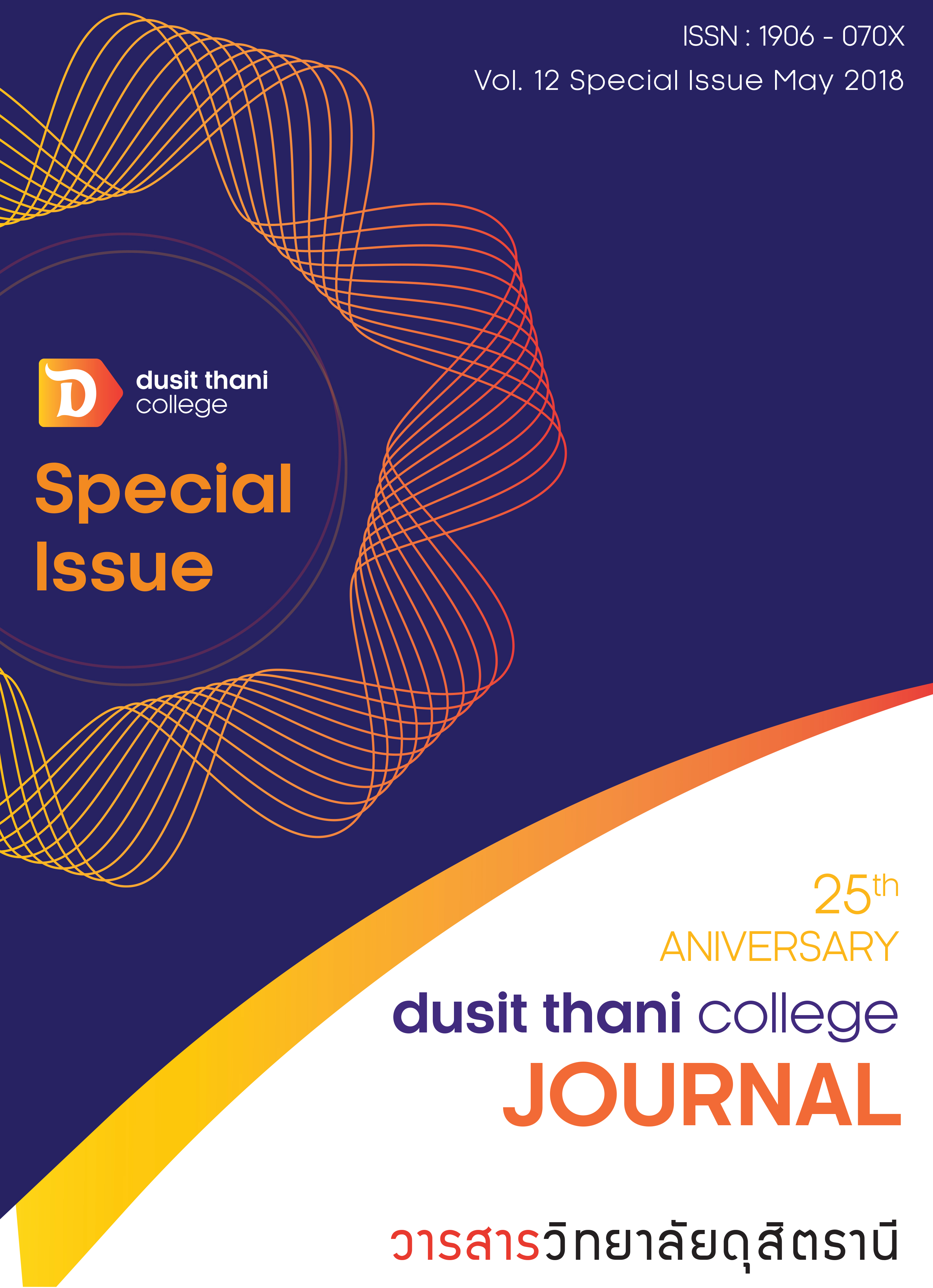The Development of Thai Food Recipes in Accordance with Dusit Thani College Standard: Maindishes
Main Article Content
Abstract
This article is a part of the study entitled “The Development of Thai Food Recipes in Accordance with Dusit Thani College Standard Phase 2” aimed to develop standard recipes of Thai food main dishes. The research was carried out by the team of researchers from Dusit Thani College who were knowledgeable and experienced in teaching and cooking Thai cuisine. Thus, the study aimed to develop Thai food recipes based on the specific criterias. The dishes must be traditionally Thai, renowned locally and internationally, healthy and could be cooked with main ingredients which were easily found. The research methods applied were first to study related documents about Thai cuisine and then brainstorm among the team of researchers. This was to select list of Thai food recipes for cooking trial in order to obtain recipes of Thai food based on Dusit Thani College standard. In addition, Thai food recipes were focused on main dished. The reflection was drawn from 30 selected subjects from Dusit Thani College students, instructors and staff who tasted the food, evaluated and made suggestions according to the evaluation form distributed earlier. Data were analyzed by descriptive statistics. The findings revealed that there were 9 main dishes of Thai food recipes.
Article Details
Article Screening Policy
- All research and academic articles to be published must be considered and screened by three peer reviews in the relevant field / article.
- All articles, texts, illustrations and tables published in the journal are the personal opinions of the authors. Editors don't always have to agree. And no responsibility whatsoever is the sole responsibility of the author.
- The articles to be published must never be published. Where did you first publish? And not in the consideration of other journals If the audit found that there has been a duplicate publication It is the sole responsibility of the author.
- Any article that the reader sees as being plagiarized or impersonated without reference. Or mislead the work of the author Please let the journal editor know it will be your greatest blessing.
References
Anantathanachai, R. et al. (2010). Development of Healthy Thai Food Set Menus based on the Sufficiency Economy Philosophy and Community Context. Suan Dusit Rajabhat University.
Arsawi, S. (2011, May 10). Origin and development of royal food before 1932. Matichon Online. Retrieved from https://www.matichon.co.th/news_detail.php?newsid= 1305020582&grpid=no&catid=53. [25 December 2015].
Brissenden, R. (2003). South East ASEAN Food. Victoria Australia: Hardie Grane Books.
Dailynews. (2015, June 22). The reputation of Thai restaurant abroad. Retrieved from https://www.dailynews.co.th/ economic/329654 [10 May 2016].
Dodgshun G. and Peters M. (2004). Cookery for the hospitality industry. 5th ed. Wallingford: Cambridge University Press.
Hancharoenwanaphusit, P. et al. (2016). The evolution of food preparation patterns and utensils from King Rama IV’s reign to present. Dusit Thani College.
Jewcharoensakul, S. (2007). Food Business. Bangkok: Than Book.
Newsplus. (2016, May 19). DITP continuously promotes the Thai Select brand. Retrieved from https://www.newsplus.co.th/82411. [19 May 2016].
Rugmai, S. et. al. (2012). The Development of Thai Food Recipes in Accordance with Dusit Thani College Standard. Dusit Thani College.
Sirisoonthorn, S. (2013). Thai Food Culture…From Past to Present. Bangkok: WVO Thai Printing.
Sukprasansap, M. and Kangsadalampai, K. (2009). Eat Thai Food Away from Cancer. Bangkok: Moh-Chao-Ban Publishing.
The Thailand Research Fund. (2004). Research Guidelines for World Kitchen Strategy. Retrieved from https://www.trf.or.th/index.php?option=com_content&view= article&id=943:2013-12-07-02-07-37&catid=22:research-digest&Itemid=217. [19 May 2016].


